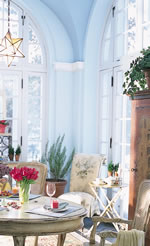Get Inspired
- Interactive Catalog
- Get Inspired
- Interactive Room Planner
- Extreme Makeover
- Cooking Demos
- Design Tips
A Reflection on Mirrors
Bring The Outdoors In
Bookcases
Armoires & Accents
Artwork
Bedrooms
Bohemian Chic
Decorative Accessories To The Rescue
Displaying Collectibles
Family Friendly Fashion
Grouping Furniture
Heirloom Pieces
Holiday Cheer
Holiday Dining
It's Only Natural
Kitchen Design - Thinking Outside the Triangle
Kitchens
Lighting
Occasional Pieces
Ottomans
Overnight Sensation
Pillows Talk
Resolution: Take a Fresh Look
Rugs
Size, Balance & Color
Tablescapes
The Chaise
Understanding Proportion
White - The Height of Fashion
Bring The Outdoors In
Bookcases
Armoires & Accents
Artwork
Bedrooms
Bohemian Chic
Decorative Accessories To The Rescue
Displaying Collectibles
Family Friendly Fashion
Grouping Furniture
Heirloom Pieces
Holiday Cheer
Holiday Dining
It's Only Natural
Kitchen Design - Thinking Outside the Triangle
Kitchens
Lighting
Occasional Pieces
Ottomans
Overnight Sensation
Pillows Talk
Resolution: Take a Fresh Look
Rugs
Size, Balance & Color
Tablescapes
The Chaise
Understanding Proportion
White - The Height of Fashion
|
||||||||||||

